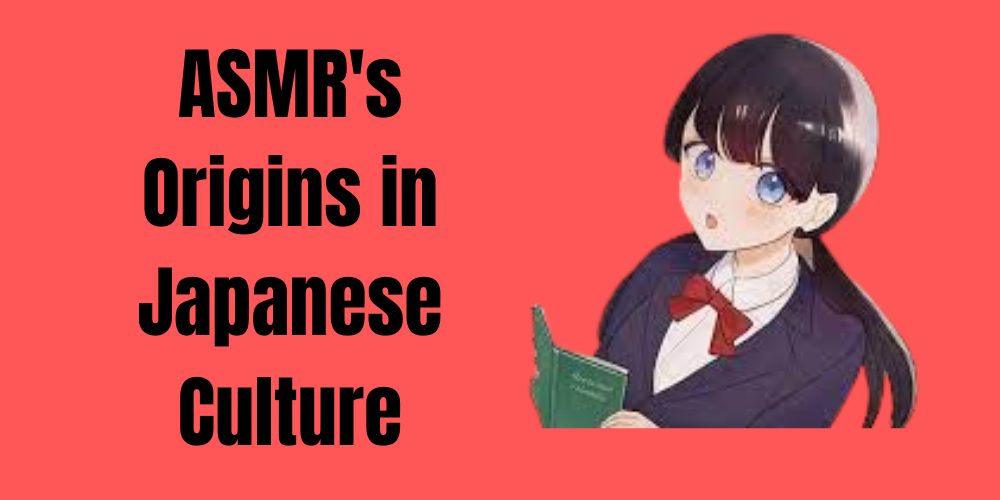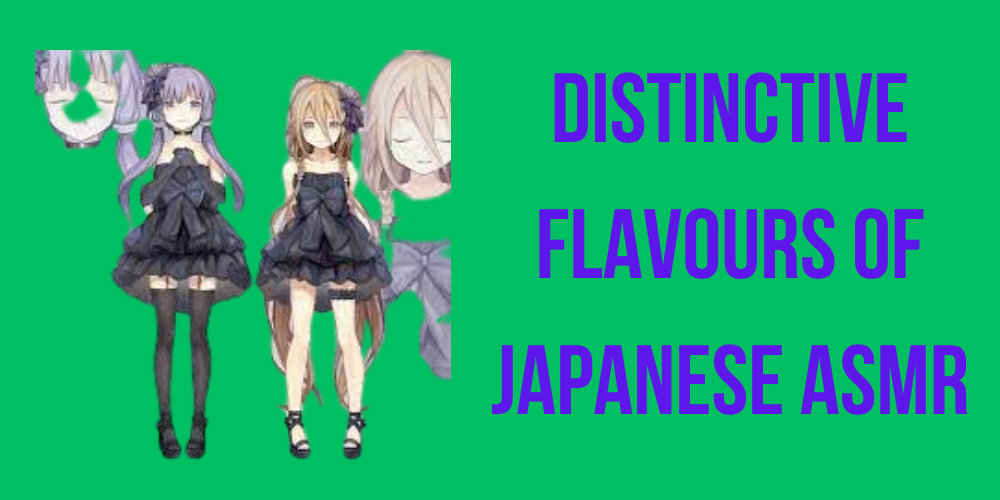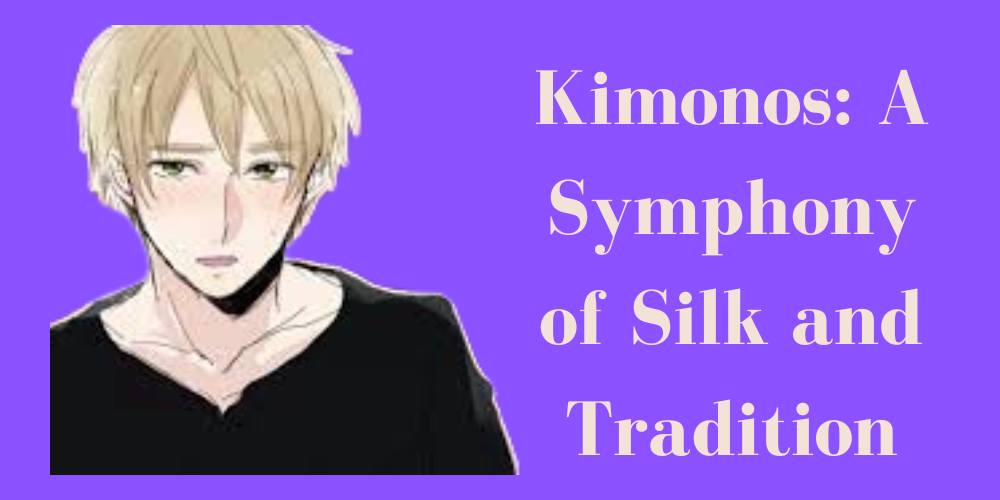The crimson leaves of Kyoto’s Kiyomizu-Dera temple rustle slowly, a gentle whisper shared by nature and visitors to the shrine. Japanese ASMR. A cultural movement combining the age-old Japanese concern for delicacy and detail with the current digital age is blossoming in the heart of this ancient city, where traditions and modernity coexist. This is the domain of Japanese ASMR on YouTube. Japanese ASMR
ASMR’s Origins in Japanese Culture
To fully understand the popularity of Japanese ASMR on YouTube, one must first understand the cultural environment in which it developed. Fine environmental nuances, ranging from koto string tones to the muffled pitter-patter of rain on bamboo, have long been admired in Japan. These have been preserved in centuries of literature and art, such as haikus, which elicit powerful emotions from seemingly little natural phenomena. Japanese ASMR
One may argue that ASMR has always existed in Japan, even if it has not been properly recognized. It is founded on ideas like mono no aware (the beauty of transience) and ‘yugen’ (profound elegance and subtlety), which perceive beauty in both transitory, delicate moments and deep, mysterious ones. Japanese ASMR

The Digital Fury
For Japan’s inherent love of detail and intricacy, the internet and platforms like YouTube opened up a completely new universe. ASMR, or Autonomous Sensory Meridian Response, is a condition in which particular sounds cause tingling feelings in certain listeners, which often leads to relaxation or sleep. While the notion was novel, its attitude was in keeping with Japanese culture. Japanese ASMR
Japanese ASMRtists began to emerge, bringing a different cultural perspective to their work. They created immersive experiences that took listeners to the Shinjuku streets or the serene shrines of Kyoto. The rich tapestry of noises in Japan inspired these designers, which covered anything from rustling kimono materials to the rhythmic tapping of wooden geta sandals.
Distinctive Flavours of Japanese ASMR
While fundamental ASMR activities like whispering, tapping, and brushing are popular throughout the ASMR community, Japanese ASMRtists bring something fresh to the table: Japanese ASMR
Historical instruments: Traditional instruments such as the shamisen, koto, and tsuzumi give musical enjoyment as well as ASMR triggers.
Many Japanese ASMR films focus on the precise methods of traditional crafts, such as the making of washi paper or the dexterity required for tea rituals.
The natural harmony: Whether it’s the murmur of a brook in rural Hokkaido or the summer cicadas in Tokyo, the murmur of nature’s symphony is a favorite among Japanese creators.

Global Acceptance and Prospects for the Future
Many foreign listeners tune in to enjoy Japanese ASMR’s unique blend of relaxation and cultural immersion. It underlines the universality of sensory perceptions and how specific sounds, regardless of language, can trigger the same feelings.
As we stand at the crossroads of history and technology, Japanese ASMR on YouTube is more than just a trend; it is a testament to Japan’s continuous engagement with its sensory landscape. It’s a sonic journey from Kyoto’s old alleyways to our ears, reminding us of the unique beauty of the globe.

Kimonos and Koto Strings: Unpacking Traditional Japanese ASMR
In the ever-changing realm of autonomous sensory meridian response (ASMR), noises like nature, tapping, whispering, and even the rustling of paper can produce that tingling sensation. As we dive further into Japan’s cultural treasures, we discover a new universe of ASMR—traditional Japanese elements that have softly provided sensory pleasure for decades. Two famous icons of Japanese cultural history, the kimono and koto, provide an intimate peek into this.
Kimonos: A Symphony of Silk and Tradition
The kimono is commonly misinterpreted as merely a piece of clothing. Instead, it blends an art form, a history lesson, and a sexual experience.
The Music: The delicate rustling of the silk kimono, particularly as its multiple layers move against each other, gives an ASMR sensation unlike any other. It has a gentle and soothing cadence, like leaves rustling in the breeze.
The Finishing Touch: The feel of silk against the skin can provoke a physical response, a series of shivers, comparable to the typical ASMR tingling. The texture of the tiny embroidery can also serve as a tactile ASMR trigger for many folks.
The View: The importance of visual stimulation cannot be overstated. The smooth flow of the fabric, with its brilliant colors and patterns, maybe as fascinating and pleasurable to watch as any contemporary ASMR video.

Japan’s Melodic Whisper: Koto Strings
The koto, a traditional Japanese stringed instrument, offers an entirely unique yet equally captivating sensory experience.
The Sound: Plucking a koto string produces a loud and resonant sound that attracts attention instantly. When the strings are played in the correct order, they produce a calming melody that transports the listener to ancient Japan. The light vibrations of the strings, the resonance of the wooden body, and the delicate nuances of each note played all contribute to a multimodal ASMR experience.
The Feel: The contact of fingertips against strings, the tension and release, can be as calming to the player as listening to music.
The Sight: Observing the exquisite dance of a musician’s fingers on the koto strings, the lovely arc of the instrument, and the shine of light bouncing off its lacquered surface might provoke a visual ASMR reaction.
The Meeting Place
A subgenre centered on Japanese Zen-inspired video has gained traction in the bustling world of ASMR. This convergence is not coincidental; the intrinsic nature of ASMR’s emphasis on attention and presence parallels Zen’s core ideals.
ASMR content influenced by Japanese Zen could include:
Nature Soundscapes: These ASMR movies capture the relaxing sounds of running water, rustling leaves, and chirping birds, much like traditional Zen gardens that use materials like rocks, sand, and water to inspire meditation.
Tea ceremonies, calligraphy, and the careful handling of traditional Japanese instruments put viewers into a meditative state by emphasizing the beauty of every gesture and action.
Meditative Narratives: Softly spoken or whispered readings of Zen koans or teachings can lead to profound contemplation and tranquillity.
Narratives of Japanese ASMR Under the Cherry Blossoms
Under the exquisite pink canopy of cherry blossoms, stories of old Japan come to life, spoken into the ears of those seeking safety. The rustling of sakura petals, along with the whisper of ancient legends, produces an ASMR (Autonomous Sensory Meridian Response) experience unlike any other.
Sakura’s Enchanted Forest Overview
When the cherry blossoms bloom in full bloom every spring, Japan is transformed into a pink paradise. These blooms,
known as ‘ Sakura’ in Japan, are not only stunning but also profoundly ingrained in the country’s culture and history. Sakura trees provide the ideal environment for an ethereal ASMR experience, combining visual and auditory magic.
The Crane Wife’s Story
The beautiful flutter of Sakura petals blends with the melodious story of The Crane Wife. In this traditional story, a crane transforms into a woman to reward a man’s charity. The soft tapping of the loom and the rustling of feathers, along with the storyteller’s beautiful voice, create an intimate and calming acoustic experience.
The Peach Boy, Momotaro’s Legend
A bold and adventurous story emerges amid the soft air that shakes the sakura blossoms. Momotaro, the peach-born boy, embarks on a quest to defeat monsters. The swish of his blade, the pattering of his footsteps, and the calm voice delivering his story bring relaxation and a sense of adventure to the listener.
Princess Kaguya and the Moonlit Sakura
Princess Kaguya’s story takes the stage as the cherry blossoms shimmer in the moonlight. The story is about a celestial princess who was discovered within a bamboo shoot and is full of mystery and drama. The shimmering lights, the calm rustle of bamboo leaves, and the repeating tale all contribute to a sleepy ASMR experience.
ASMR Techniques Incorporating Japanese Elements
The beauty of these stories is enhanced by ASMR triggers. Soft plucks and strums from traditional Japanese instruments like the koto and shamisen send shivers up the spine. The rustle of kimono fabric, the dripping of sake, and the delicate clinks of tea ceremonies add layers to the experience, transporting the listener deeper into old Japan.
Traditional Japanese Instruments Symphony
Japan’s cultural heritage is rich in musical instruments with distinctive sounds. Some that have been incorporated into ASMR are as follows:
Koto: A zither-like stringed instrument with plucked strings that produce resonant tones. It becomes a prime candidate for ASMR content when played slowly and quietly.
Shakuhachi: A bamboo flute with deep, haunting tones. Its breathy tones can elicit great relaxation in ASMR.
Taiko: Although recognized for its forceful beats, the deep rumble of the taiko drum may resonate with listeners in unexpected ways when performed quietly.
Tsuzumi: A finger drum with muffled beats that can easily blend with the calm mood of an ASMR scenario.
FAQ: Japanese ASMR
What exactly is ASMR?
ASMR, or Autonomous Sensory Meridian Response, is a tingling sensation that some people feel on their skin, usually on the scalp or the back of the neck, in response to specific aural or visual stimuli. Many people seek out ASMR content for relaxation or sleep help because it is described as pleasant and pleasurable.
What distinguishes Japanese ASMR from other forms of ASMR?
The content of Japanese ASMR frequently contains elements of Japanese culture, language, and ambiance. This could feature Japanese whispering, traditional Japanese instrument sounds, or scenes set in Japanese locations such as ryokan (traditional inns) or tea ceremonies.
What is the appeal of Japanese ASMR on YouTube?
Japanese ASMR combines cultural richness with the calming advantages of ASMR. Many people find that the sounds of the Japanese language paired with traditional settings give a unique and often exotic relaxation experience.
Can I comprehend Japanese ASMR if I don’t know the language?
Yes! The sensory experience, rather than the spoken information, is what draws people to ASMR. Even though they don’t comprehend the language, many non-Japanese speakers find Japanese ASMR to be exceptionally calming.
Can I utilize Japanese ASMR to help me learn Japanese?
While ASMR videos are not intended to be language study tools, they can provide listeners with exposure to actual spoken Japanese. It is possible to increase your vocabulary or improve your listening comprehension, but it is ideal to use dedicated resources for controlled study.





